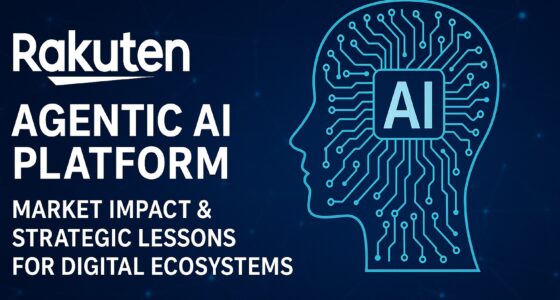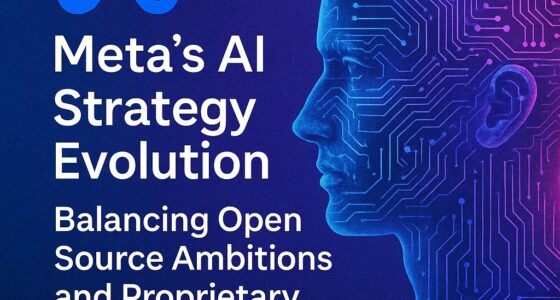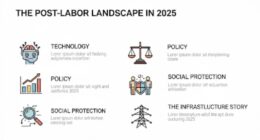Sam Altman just made a statement that challenges our expectations about AI’s pace and impact. He said we’re living through a “gentle singularity” right now – meaning AI has already become smarter than humans in many ways, but society hasn’t collapsed into chaos like science fiction predicted. So what does this actually mean? Why does it feel like we’re still waiting for the AI revolution when it might already be happening around us? The answer reveals something fascinating about why breakthroughs in labs don’t instantly reshape our world – from Hofstadter’s Law to the realities of how people actually live their daily lives.

What Makes a Singularity ‘Gentle’?
To understand what Altman means, we need to look at the disconnect between AI’s actual capabilities and how we experience them day-to-day. Here’s the strange thing about living through a technological revolution: you wake up, check your phone, grab coffee, and head to work just like any other Tuesday. The bills still need paying, your boss still sends those unnecessary emails, and this ordinary routine continues even as artificial intelligence quietly reshapes the world around us. This is exactly what’s happening right now with AI, and it’s throwing everyone off balance. We expected robot overlords and overnight job displacement. Instead, we got ChatGPT helping students with homework while we still argue about whether to use self-checkout at the grocery store.
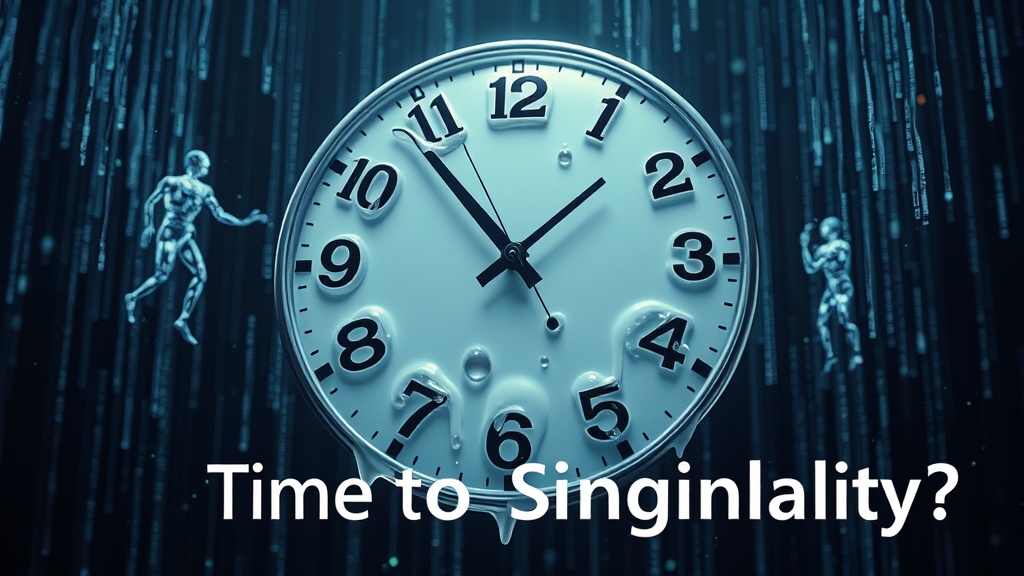
But here’s what makes this so fascinating. AI systems can already outperform doctors at diagnosing certain diseases. GPT-4 passed the bar exam, outperforming most human test takers. AI discovered halicin, an antibiotic against drug-resistant bacteria, and DeepMind’s AlphaFold predicted virtually every known protein structure, solving a 50-year-old scientific challenge. These aren’t incremental improvements – they’re breakthrough achievements that should fundamentally change how we think about human intelligence.
So why does everything feel so ordinary? Why haven’t these capabilities transformed your daily experience yet? The answer gets to the heart of what Altman means by a “gentle” singularity. The dramatic version we expected would have looked like science fiction: mass unemployment overnight, AI systems making all major decisions, society restructuring within months. The gentle version looks like gradual integration where AI capabilities exist but human institutions take years to figure out how to use them effectively.
Picture this scenario: your local hospital has access to AI that can diagnose skin cancer more accurately than dermatologists, but the legal department is still reviewing liability issues. Your company could automate half its customer service operations, but the implementation team is stuck in procurement meetings. Your kid’s school could personalize education for every student, but the school board is debating data privacy policies. The technology exists, but human systems move at human speed.

This creates a weird disconnect where we’re simultaneously living in the future and the past. You can have a philosophical conversation with an AI about quantum physics, then spend twenty minutes on hold trying to change your cable plan. AI can write poetry that moves people to tears, but your doctor’s office still uses a fax machine. The capabilities are superhuman, but the adoption is painfully human.
Here’s why this matters for understanding what’s actually happening. Our brains evolved to notice sudden changes – the rustle in the bushes, the crack of a branch. We’re wired to spot threats and opportunities that appear quickly. But we’re terrible at recognizing gradual transformations. Psychologists call this “change blindness” – the phenomenon where we miss significant alterations that happen slowly over time.

Think about how the internet transformed society. It didn’t happen overnight in 1995 when the web became mainstream. It took years for online shopping to feel normal, decades for social media to reshape politics, and we’re still figuring out remote work. Each step felt incremental, but the cumulative effect revolutionized human civilization. Most people didn’t wake up one day thinking “everything has changed” – they just gradually found themselves living differently.
The same pattern is playing out with AI right now. Your smartphone keyboard predicts your next word using machine learning. Your email filters spam with AI. Netflix recommends shows using algorithms that understand your preferences better than your friends do. Uber routes drivers using systems that process millions of data points per second. These AI applications have become invisible infrastructure – so seamlessly integrated that we forget they’re there.

What does this mean for us? We might be experiencing the most significant technological shift in human history without the dramatic fanfare we expected. No robot uprising, no mass protests, no government emergency sessions. Just a quiet revolution happening in boardrooms, laboratories, and software updates while we go about our normal routines.
The “gentleness” of this singularity isn’t about AI’s limitations – the technology is already incredibly powerful. It’s about human society’s response time to revolutionary change. We’re not slow because we’re stubborn or scared. We’re slow because changing complex systems requires time, coordination, and careful consideration of consequences. But this raises a deeper question: why do even the most brilliant minds consistently underestimate how long real change actually takes?
The Reality Gap: Why Innovation Feels Slower Than It Is
There’s a principle in computer science that perfectly explains this phenomenon. It’s called Hofstadter’s Law, and it states that “it always takes longer than you expect, even when you take into account Hofstadter’s Law.” This recursive warning captures something profound about technological progress – we consistently underestimate how long things will take, even when we’re trying to be realistic about delays. What makes this even more fascinating is that tech billionaires, the people with unlimited resources and the smartest teams money can buy, fall into this trap repeatedly. Even Sam Altman has acknowledged how timelines slip in tech, noting that Elon Musk went from calling full self-driving “impossible” to “late” – a perfect example of how even insiders struggle with implementation reality.

Take Musk’s predictions about self-driving cars. Back in 2017, he confidently announced that full self-driving capabilities would be available that same year. We’re now in 2024, and Tesla is still rolling out incremental updates to their autopilot system. This isn’t a story about Musk being wrong – it’s a perfect case study of how even the most ambitious innovators struggle with implementation timelines. The technology works in controlled environments. The algorithms can navigate complex scenarios. But getting from “it works in our lab” to “it works everywhere for everyone” involves challenges that pure engineering talent can’t solve. Experienced tech teams often learn to double their best-case estimates to avoid surprises, but even this heuristic frequently proves insufficient.
Here’s what most people miss about technological deployment. The technical breakthrough is often the easy part compared to integrating that breakthrough into the messy reality of human systems. Think about what happens when a company wants to implement new AI tools. The software might be revolutionary, but first it needs approval from the legal department who wants to review liability issues. Then procurement needs to negotiate contracts and budgets. IT has to ensure compatibility with existing systems. HR needs to plan training programs. Each department moves at its own pace, creating bottlenecks that have nothing to do with the technology’s capabilities.

Legacy infrastructure creates particularly stubborn obstacles. Walk into any major corporation and you’ll find a mixture of cutting-edge tools running alongside systems from the 1990s. Why? Because replacing working systems is expensive and risky. That database running payroll might use outdated code, but it processes paychecks correctly every two weeks. Upgrading means months of testing, employee retraining, and the possibility that something breaks during the transition. Risk-averse managers often conclude that keeping the old system running is safer than embracing the new one, even when the new system is objectively superior.

Enterprise software adoption provides countless examples of this phenomenon. Companies spend years evaluating new platforms, then another year implementing them, followed by additional months training employees and working out integration issues. During a recent corporate transformation study, researchers found that companies typically require a minimum of 18 months to complete major technology transitions, and that’s with executive support and dedicated implementation teams. Without strong leadership backing, these projects can stretch across multiple years or quietly disappear from priority lists altogether.
What creates this gap between Silicon Valley time and real-world time? Startups operate in an environment designed for rapid iteration. They can rebuild their entire technology stack over a weekend if needed. But established institutions operate under completely different constraints. They serve diverse stakeholders with conflicting priorities. They must maintain existing operations while implementing changes. They face regulatory requirements that startups can ignore.
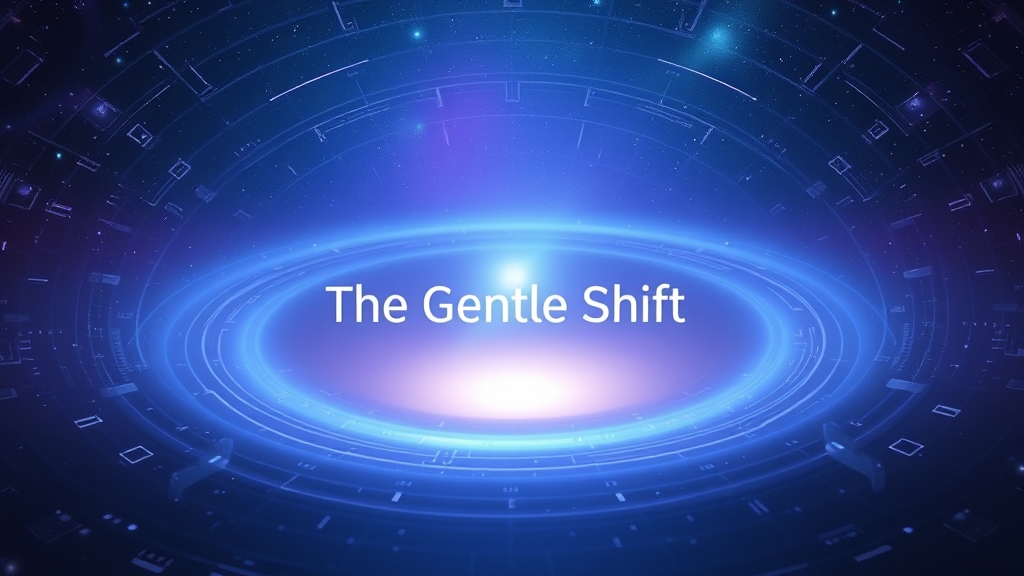
We miss these gradual shifts because our minds expect sudden jumps, not slow drifts. The hidden costs of technological change extend far beyond software licenses and hardware upgrades. Retraining employees disrupts productivity for months. Updating processes requires coordination across multiple departments. Managing transition risks means running parallel systems until everyone feels confident in the new approach.
This explains why innovators and implementers often seem to live in different worlds. The disconnect between AI’s potential and its current impact isn’t a bug in the system – it’s actually how complex societies have always adopted transformative technologies. But this raises an important question about where we actually stand in this process of change.
The Diffusion Problem: Why AI Hasn’t Taken Over Yet
Understanding where we stand requires looking at the numbers behind the hype. Here’s a statistic that serves as a reality check: only 20% of Fortune 500 companies have official AI implementation policies. Think about that for a moment. We’re talking about the largest, most resource-rich organizations in the world, and four out of five haven’t even established formal guidelines for using technology that’s readily available and often performs better than human alternatives. This gap between AI’s capabilities and corporate adoption reveals exactly why the revolution feels so sluggish despite all the breakthrough announcements.

Most Fortune 500 companies might have employees experimenting with ChatGPT or other AI tools, but that’s vastly different from official corporate adoption with proper policies, training programs, and integration strategies. Individual curiosity moves much faster than institutional change, which explains why you might use AI for personal projects while your workplace still operates exactly as it did five years ago.
But here’s where things get really interesting. Even if every company and individual wanted to adopt AI tomorrow, the infrastructure simply doesn’t exist to support that demand. OpenAI and Google simply lack enough GPUs and power capacity to serve everyone at once. This creates a fundamental bottleneck that has nothing to do with willingness to adopt and everything to do with physical limitations. Imagine if everyone decided to buy electric cars simultaneously – there wouldn’t be enough charging stations, manufacturing capacity, or electrical grid infrastructure to support that transition overnight.

The human factor creates additional friction at every level of decision-making. Picture a typical corporate scenario: the IT department worries about security vulnerabilities and integration challenges with existing systems. Middle managers question budget allocations and wonder about return on investment. Executives express concerns about liability issues and regulatory compliance. Each stakeholder approaches AI adoption through their own lens of responsibility and risk tolerance. This creates a natural slowdown that has nothing to do with the technology’s capabilities and everything to do with organizational complexity.
Historical examples show us that this gradual pace is completely normal for transformative technologies. Electricity was invented in the late 1800s, but many rural areas didn’t get electrical power until the 1940s. Each of these technologies faced what experts call the “last mile problem” – the gap between having working technology and successfully integrating it into people’s daily workflows.

What makes the last mile so challenging? Organizations must retrain employees, update processes, and manage transition risks while maintaining their existing operations. Legacy systems create particularly stubborn obstacles because replacing something that works, even if it’s outdated, requires significant time and resources. Most companies run a mixture of old and new technologies simply because coordinating a complete overhaul is more disruptive than beneficial in the short term.

Here’s why this matters for understanding our current moment. The gradual adoption of AI might actually benefit society more than sudden, widespread transformation. This slower pace gives regulatory frameworks time to develop alongside technological capabilities. It allows ethical considerations to emerge and evolve. Organizations can identify and solve problems before they become widespread issues. Workers have time to adapt and retrain rather than facing immediate displacement.

Think about what rapid, universal AI adoption might look like. Sudden job displacement across multiple industries. Regulatory chaos as governments scramble to address unforeseen consequences. Social disruption as communities struggle to adapt to rapid economic changes. The measured pace we’re experiencing allows society to adapt gradually rather than being overwhelmed by sudden transformation.
The gentle singularity isn’t a disappointment or sign that AI is overhyped. It’s exactly how transformative technologies have always spread throughout human civilization. We’re living through a revolution that follows historical patterns of technological diffusion, which means the changes feel incremental even when they’re ultimately revolutionary. This pattern reveals something important about how we understand technological progress itself.
Conclusion
What this means for anyone watching AI’s development is that we’re experiencing history in real time, even if it doesn’t feel dramatic. Sam Altman’s gentle singularity reveals something important about human expectations versus technological reality. We’re living through a revolution that feels ordinary because that’s exactly how real change happens. The dramatic transformation we expected was always a Hollywood fantasy.

Think about the AI already integrated into your daily life. Your phone’s keyboard predictions, email spam filters, music recommendations, navigation apps. These systems process millions of decisions for you every day. If you’ve noticed AI quietly reshaping your day, let me know in the comments—what’s the most surprising AI interaction you experienced this week? We may only see the singularity’s scale when we look back, but right now we’re living it—gently, gradually, and profoundly.



